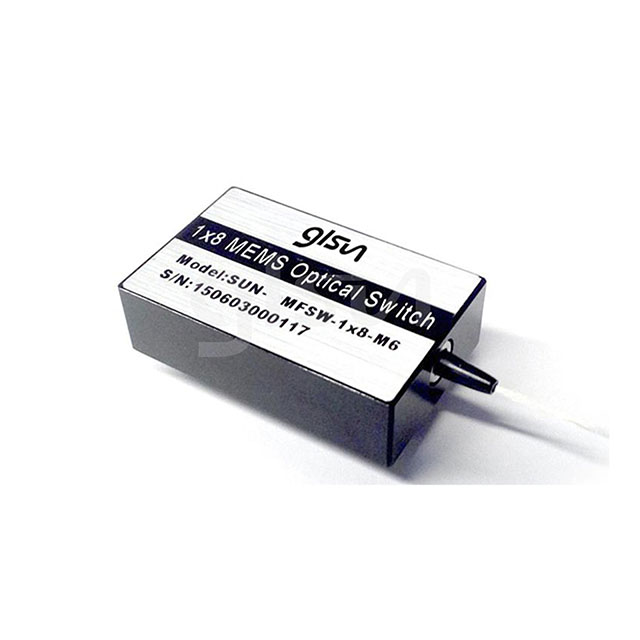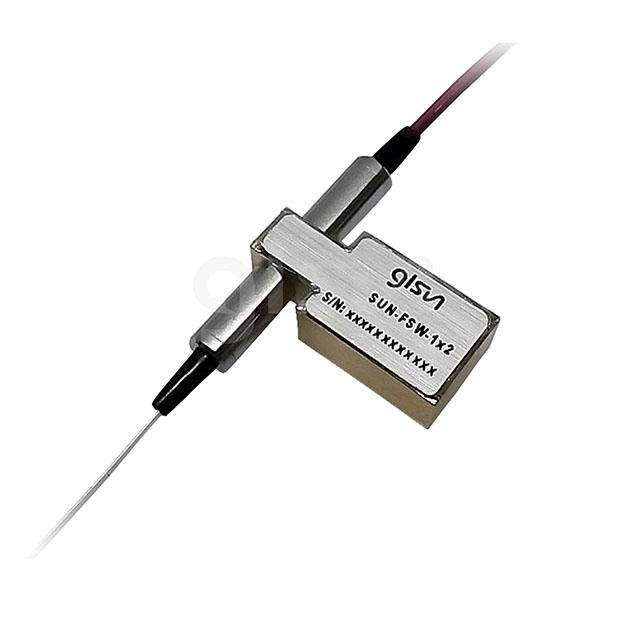Fiber Optic Tech
Optical Switching Technologies
Optical MEMS are miniature devices with optical, electrical, and mechanical functionalities at the same time, fabricated using batch process techniques derived from microelectronic fabrication. Optical MEMS provide intrinsic characteristics for very low crosstalk, wavelength insensitivity, polarization insensitivity, and scalability. Optical MEMS-based switches are distinguished in being based on mirrors, membranes, and planar moving waveguides. The former two are free-space switches; the latter are waveguide switches. Optical switches based MEMS technology are now widely used and are considered a good option for optical switching networks.

Opto-optical switches realize switching functions relying on the intensity-dependent nonlinear optic effect (which is ultrafast) in optical waveguides, such as two-photon absorption, lightwave self action and the Kerr effect. They are also called optically controlled switches or all-optical switches. There are two main types: optical fiber-based switches and semiconductor-based switches. Semiconductor based all-optical waveguide switches have many important issues to be considered before practical applications: low operating power, ultrafast operation, high extinction ratio, room temperature operation, and polarization-independent operation.

BASIC PERFORMANCE
Insertion loss: The insertion loss of optical switching technology is defined as the optical power loss when optical signals pass through the optical switch, consisting of coupling loss, waveguide propagation loss, and excess loss. When designing a network according to optical power budget, optical switches and their cascading impact network performance greatly. Furthermore, insertion loss limits the scalability of optical switches and increases system cost.
Switching speed: The switching speed is defined as the time period from the moment the command is given to the switch to change state to the moment the insertion loss of the switched path achieves more than 90 percent of its final value. According to switching applications, the switching time is divided into three levels: multimillisecond order for protection application, nanosecond order for packet switching application, and picosecond order for bit-level optical time-division multiplexing (OTDM) application.
Crosstalk: Crosstalk is the ratio of the power leaked to the wrong output and the power correct output, used to measure the signal interference between channels. Low crosstalk and high extinction ratio indicate small signal interference or high signal quality. Typically, the crosstalk value is around 40 or 50 dB.
Polarization-dependent loss(PDL): Polarization sensitivity is used to measure polarization dependence. When it is very high, it harms transmission reliability, and increases monitoring and dynamic compensation requirements.
Wavelength dependency. Bit rate and protocol transparency: The ability gives more flexibility in configuring networks. Service providers can switch the whole utilization operation window fiber capacity, or part of it, for more efficient bandwidth and traffic management, and own 1300–1600 nm. Operation bandwidth.
Multicast: Multicast can provide powerful connection capability and save many resources. It has become an important parameter for measuring optical switches.
Switching device dimension: Switching fabric dimension/switching matrix size reflects the switching capability of an optical switch. The demand for optical switches is based on the of optical switches in the optical network. Small-scale optical switches are ideal for a variety of per-channel applications, such as small channel count programmable optical add-drop multiplexers (OADMs) and protection switches. Large matrix switches are typically deployed at backbone networks where a large number of wavelengths or fibers converge.
Scalability: Easy scalability is essential to form larger N × N switches from smaller orders for applications.
Nonblocking: Nonblocking means the flexibility to route or reroute any input channel to any unoccupied output channel, if needed. The blocking problem in large-scale or cascaded switches is more obvious than in smaller optical switches. In general, optical switches need to be strict-sense nonblocking, which does not disturb existing connections.
Reliability: Given the number of terabits per second the device can switch, reliability is extremely important for optical switching applications. To meet stringent communications standards, switches must meet specified environment requirements for temperature variations, vibration, and humidity.
Repeatability: Port-to-port repeatability refers to all paths across the switching fabric being of identical length.
Power Consumption: High power consumption increases a system’s cost, and associated heat dissipation increases a system’s ambient temperature.



















